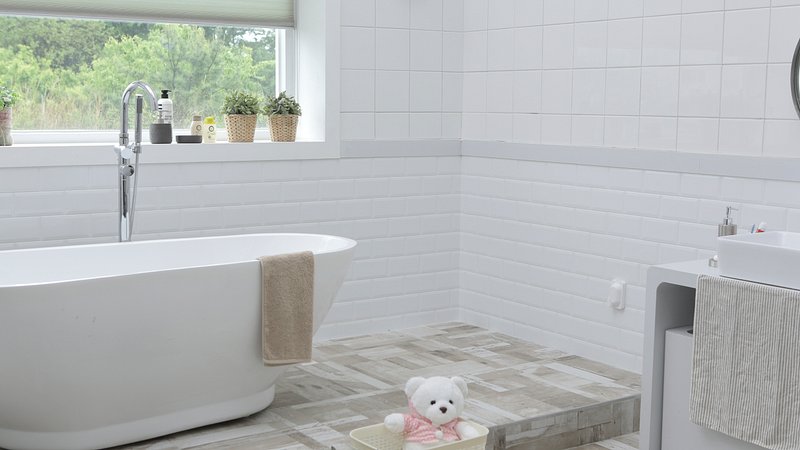Tile Trends 2025: Patterns, Grout Choices & Installation Tips
As 2025 unfolds, tile continues to play a major role in both residential and commercial interior design. From bold pattern combinations to subtle textures and innovative grout solutions, the latest tile trends reflect a balance of aesthetics, durability, and practical performance. Whether you're remodeling a bathroom, updating a kitchen backsplash, or laying down new flooring, understanding what’s trending can help you make informed, future-ready decisions.
This guide explores the top tile patterns for 2025, emerging grout styles, and key installation tips to ensure lasting results.
Tile Trends 2025: What’s In Style?
1. Large-Format Tiles
Large-format tiles—typically 24"x48" or larger—are becoming more common in both wall and floor applications. Their appeal lies in creating a sleek, uninterrupted surface with minimal grout lines, which can help smaller spaces feel more open and reduce maintenance.
Use Cases:
- Living rooms with open-concept layouts
- Minimalist bathrooms with spa-like aesthetics
- Commercial lobby flooring
2. Textured and 3D Tiles
Tiles with raised patterns, natural finishes, or tactile surfaces are gaining attention. They’re particularly popular for accent walls and backsplashes.
Material Choices:
- Textured porcelain tiles mimicking stone
- 3D ceramic tiles with geometric shapes
- Handmade zellige for artisanal texture
3. Terrazzo and Flecked Finishes
Modern terrazzo tiles, now made with sustainable materials, offer visual interest through speckled aggregates. Expect to see them used not only in flooring but on shower walls, fireplace surrounds, and countertops.
4. Wood-Look and Concrete-Look Porcelain
Porcelain tiles that mimic the appearance of wood grain or poured concrete continue to be in demand. Their advantage lies in durability without sacrificing design continuity.
5. Geometric and Mosaic Patterns
Designers are leaning into angular, repeating patterns like hexagons, diamonds, and herringbone layouts. Mosaic patterns using small tiles allow more freedom in creating personalized designs.
Grout Trends: What’s New in 2025?
Grout is no longer just a functional filler. In 2025, it’s becoming a design tool that can enhance or soften the tile’s appearance depending on the chosen look.
1. Color-Matched Grout for Seamlessness
For those seeking a clean and cohesive look, color-matched grout that closely blends with the tile is being widely used, particularly in large-format applications.
2. Contrasting Grout for Emphasis
Bold grout colors—black grout with white tile, or gold grout with dark marble—are used to highlight tile patterns and create visual interest.
3. Metallic and Glitter Grout
Though used sparingly, metallic grout (silver, bronze, copper) adds an upscale touch in luxury spaces such as powder rooms or bar areas.
4. Epoxy Grout for Performance
For wet areas like showers and kitchen backsplashes, epoxy grout remains a top choice due to its water resistance, stain protection, and color retention.
Installation Tips for Longevity & Aesthetics
Proper installation is critical for tile performance and aesthetics. Whether you hire a professional or go DIY, these tips help ensure a lasting result.
1. Surface Preparation is Key
Tiles should only be installed on a clean, level, and dry substrate. For flooring, ensure subfloor stability and use uncoupling membranes when needed to prevent cracking.
2. Use the Right Adhesive
Different tile materials require specific adhesives. Porcelain tiles, for instance, typically need a latex-modified thinset.
3. Mind the Tile Layout
Before installation, do a dry layout to plan pattern orientation, edge cuts, and focal points. This helps avoid awkward cuts at walls or corners.
4. Choose Appropriate Grout Width
Standard grout lines range from 1/16" to 3/8". Larger tiles often benefit from thinner grout lines, while rustic or handmade tiles need wider joints for a natural look.
5. Seal Where Necessary
Not all tiles need sealing, but many natural stone and cement tiles do. Even some grout products benefit from a sealant to extend lifespan and resist stains.
Eco-Friendly Tile Choices for 2025
Sustainability continues to shape tile production and selection. Consumers are looking for low-impact materials and certifications that ensure ethical manufacturing.
Sustainable Tile Options Include:
- Recycled-content porcelain
- Locally sourced clay tiles
- Cork or bamboo tiles for soft flooring alternatives
Design Tip: Transitioning Between Materials
In open spaces, tile often meets other flooring materials like hardwood or vinyl. Use metal transition strips or flush insets to create a clean finish without tripping hazards.
Summary: Key Takeaways for 2025 Tile Trends
- Patterns: Geometric, large-format, terrazzo, and 3D textures are prominent.
- Grout: Used as a design feature with both subtle and bold applications.
- Installation: Precision in prep, layout, and materials drives long-term success.
- Sustainability: Consumers prioritize recycled and eco-conscious tile options.
By understanding current trends and best practices, you can make smart design choices that align with both visual preferences and technical performance.
FAQs
1. What tile size is best for small bathrooms in 2025?
Large-format tiles with minimal grout lines are trending, even in small bathrooms, because they create the illusion of more space.
2. Can I mix different tile patterns in one room?
Yes, mixing patterns (such as pairing a geometric floor with a simple subway backsplash) can add depth—just keep the color palette consistent for cohesion.
3. How do I choose the right grout color?
Consider your goal: matching grout blends the tile edges; contrasting grout highlights the pattern. Neutral grays are a safe, modern middle ground.
4. Is epoxy grout worth the extra cost?
In areas with high moisture or staining potential, epoxy grout offers superior performance and may reduce long-term maintenance costs.
5. Do I need to seal porcelain tile?
Most porcelain tiles are non-porous and don’t require sealing. However, some unglazed or textured types may benefit from a light sealant, especially on floors.

